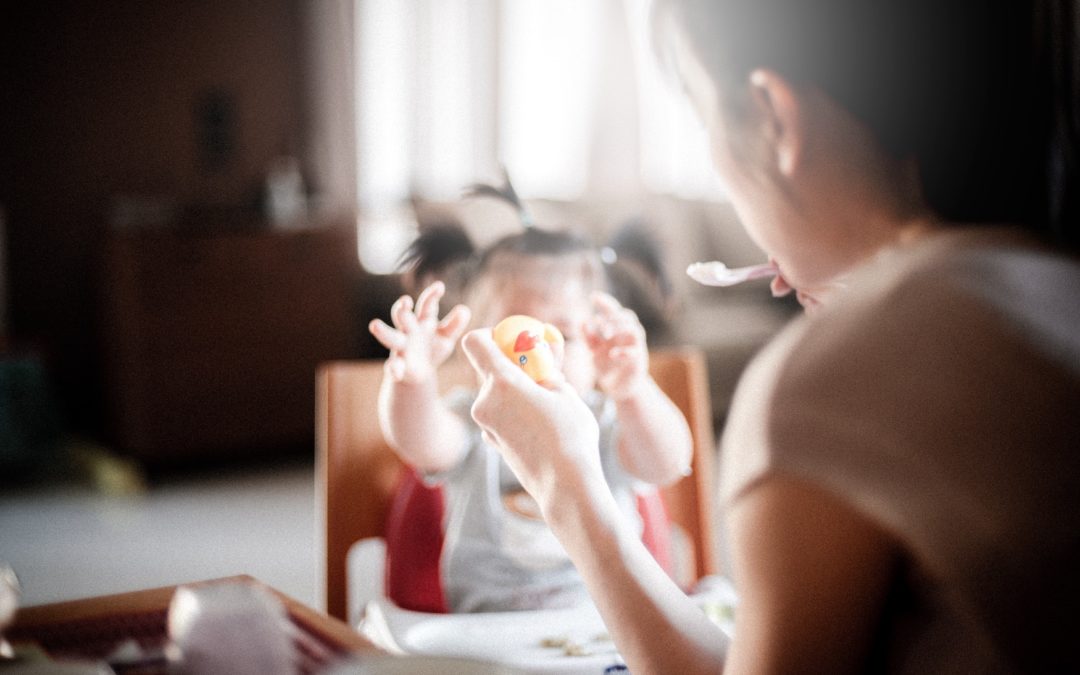It’s an exciting time for caregivers when babies finally reach the age where they’re ready to chow down on solid food. Watching a special little someone experience the glorious taste of everything from bananas to yogurt for the very first time is magical. But it can also be confusing trying to figure out which foods to offer, how to prepare and store them, and what products you’ll need. To help you on the road to creating an adventurous eater, here’s a quick cheat sheet with everything you need to know to be a homemade baby food pro.
When are babies ready for solids?
Most babies start eating solids around 6 months. Occasionally, babies are ready earlier, but it’s a good idea to base the starting point on recommendations from the baby’s pediatrician and parents. Babies who are ready for solids can usually hold their heads up on their own, sit with support, have developed the ability to grasp and chew on toys, and are showing interest in food.
To puree or not to puree?
Baby food used to mean watery green bean mush in a jar, but these days there are so many new and creative ways to get babies eating the good stuff. One way is through baby-led weaning. This means offering babies a variety of appropriately sized and soft finger foods, such as small bits of sweet potato, banana, soft meats, egg, and avocado, and allowing them to experiment with feeding themselves. This method is said to encourage the development of fine motor skills, chewing skills, and help introduce babies to a wide variety of foods.
But that doesn’t mean babies need to skip purees entirely. Many people incorporate a mix of purees and finger foods, especially when babies are just starting to experiment with solids. Purees are a great option for babies who need more time to develop their chewing and grasping skills, and they allow caregivers to offer foods in a very controlled way to watch for food allergies. Purees are also great for toting around in convenient pouches and containers on the go.
What do I need to make my own purees?
The process of making a baby food puree is essentially just boiling, steam, or roasting foods and then blending or mashing, and there are a number of tools that make it crazy easy to prep baby food in bulk.
- All-in-one baby food maker: There are dozens of baby food makers on the market. A popular favorite is the Beaba Baby Cook 4-in-1, which can steam, blend, defrost, and reheat, all with the touch of one button.
- Blenders and storage: A lot of people swear by the Baby Bullet, which is an easy to use small blender and food storage system. Just pop soft food into the blender in whatever combinations you want, blend it up, and spoon it into the storage containers.
- DIY baby food pouch maker: Pour pre-pureed food into the Infantino Squeeze Station to make DIY baby food pouches in convenient reusable pouches. This machine can make pouches from three different kinds of food at once, and the reusable pouches create less waste than store-bought.
- Manual food makers: If you’re looking for something more low-tech, a simple Mash ‘N Serve bowl may do the trick. Just pop in pre-softened food and mash it up right in the bowl. You could also try a baby food mill, which is a simple kitchen instrument that grinds fruit and vegetables into a chunky mash.
What foods to choose
In the earliest stages of eating, babies should consume only nutrient-rich foods, like fruits and vegetables, lean meats, healthy dairy (like plain yogurt), and whole grains. A cook book, like The Big Book of Organic Baby Food, is a great reference to use. Instagram accounts like Yummy Toddler Food also offer awesome ideas and recipes for feeding babies and toddlers at different stages.
Another account, Baby Food Universe, has great tips for introducing babies to unique and ultra-healthy flavor combinations.
Safety
It’s important to introduce foods slowly, only offering a small number of new foods at a time. If a child has an allergic reaction, you want to be able to narrow down what caused it. If you’re serving whole foods, they should be cut into easily graspable, bite-sized (no bigger than a half-inch in any direction) pieces to prevent choking. Food should also be soft and easily squishable, so avoid things like nuts, popcorn, whole grapes, raw carrots, and stringy foods, like celery.
Pureed baby food can be stored in the refrigerator or it can be frozen. Food should never be left at room temperature for more than 2 hours. If it contains meat or eggs, it should only be stored in the fridge for 24 hours or less. Fruit and vegetable-based foods can be stored in the refrigerator for 48 hours or less. Foods can be frozen for up to one month, and they should be defrosted in the refrigerator or using the defrost function on a baby food maker, rather than on the counter or in standing water. For more about food safety, check out these guidelines.

